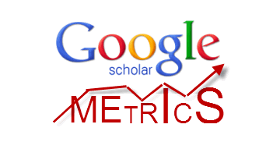Las Tecnologías de la Información y la Comunicación en apoyo a la asignatura de metabolismo nutrición
Palabras clave:
Metabolismo, Pandemias, Aprendizaje, Comunicación, Educación a Distancia, Tecnología de la InformaciónResumen
Introducción: la universidad es la institución responsable de promover el conocimiento con un carácter creador, estimular el desarrollo de la ciencia mediante la investigación y el desarrollo tecnológico para formar a las jóvenes generaciones con un enfoque humanista y un importante encargo social.
Objetivo: elaborar un material complementario que contiene un sistema de tareas docentes que dan salida al programa de primer año de la carrera de medicina de la asignatura de Metabolismo-Nutrición en tiempos de pandemia con la creación de grupos de WhatsApp para aclaración de dudas.
Método: se realizó una investigación de desarrollo en el campo de recursos para el aprendizaje en la Facultad de Ciencias Médicas de Granma desde marzo 2020 a agosto 2020.El universo de estudio estuvo integrado por 83 estudiantes. Resultados: el 100 % de los estudiantes y profesores consideraron útil los materiales complementarios y el grupo de WhatsApp para aclarar dudas y realizar consultas docentes, mientras que el 98,79 % los consideraron útil para la adquisición de los contenidos.
Conclusiones: los materiales complementarios y el uso de un grupo en WhatsApp permiten mejorar la estrategia educativa en el siglo XXI, con buena aceptación por parte de estudiantes y profesores.
Descargas
Citas
1. Segura Castilla J. Las ATAL: una experiencia andaluza de atención al alumnado de nueva incorporación de origen extranjero. En: Actas del I Congreso Internacional sobre Migraciones en Andalucía. [Internet] Andalucía: Instituto de Migraciones. 2011 [citado 12 Ene 2010]; 503-512. Disponible en: https://dialnet.unirioja.es/servlet/articulo?codigo=4033063
2. Cabero Almenara J, Duarte Hueros AM. Evaluación de medios y materiales de enseñanza en soporte multimedia. Pixel-Bit. Revista de Medios y Educación [Internet]1999 [citado 12 Ene 2010]; 13:23-45. Disponible en: https://idus.us.es/bitstream/handle/11441/45495/file_1.pdf?sequence=1&isAllowed=y
3. Lago Ballesteros J, Basanta Camiño S, Navarro Patón R. La enseñanza de los primeros auxilios en educación física: revisión sistemática acerca de los materiales para su implementación. Retos: nuevas tendencias en educación física, deporte y recreación [Internet] 2018[citado 12 Ene 2020]; 34: 349-355. Disponible en: https://dialnet.unirioja.es/servlet/articulo?codigo=6736337
4. Chang Chávez CC. Uso de recursos y materiales didácticos para la enseñanza de inglés como lengua extranjera. Pueblo continente [Internet]2017[citado 12 Ene 2020];28(1):261-289.Disponible en: http://journal.upao.edu.pe/PuebloContinente/article/viewFile/772/714
5. López Z. El diseño de materiales didácticos sobre TIC para una enseñanza universitaria inclusiva y online. Revista Internacional de Comunicación y Desarrollo [Internet] 2018 [citado 12 Ene 2020]; 9:30-41. Disponible en: https://dialnet.unirioja.es/servlet/articulo?codigo=6726457
6. Morandi G, Tomas LJ, Abal AA, Pérez P, Felipe P, Gamino AE. Utilización de distintos recursos educacionales en la enseñanza de Histología. Revista de la Facultad de Odontología[Internet] 2018 [citado 12 Ene 2020]; 2018: 85-88. Disponible en: http://sedici.unlp.edu.ar/bitstream/handle/10915/78209/Documento_completo.pdf-PDFA.pdf?sequence=1&isAllowed=y
7. Texidor Pellón R, Reyes Miranda D, Cisnero Reyna CH. Las tecnologías de la información y la comunicación en la enseñanza de inglés en Ciencias Médicas. Educación Médica Superior [Internet]. 2017 [citado 10 May 2021]; 31(2): [aprox. 9 p.]. Disponible en: http://www.ems.sld.cu/index.php/ems/article/view/1012
8. Sánchez Delgado JA, Soto Santiesteban V, Ortiz Romeo GM, Felicó Herrera G. Propuesta de un sistema de medios de enseñanza para el tema Asesoramiento Genético. Banes. 2016. En: VI Jornada Científica de la SOCECS. [Internet] Holguín: Universidad de Ciencias Médicas Mariana Grajales.2017[citado 12 Ene 2020]. Disponible en: http://socecsholguin2017.sld.cu/index.php/socecsholguin/2017/paper/view/18
9. Puente Ortega P. Clasificación de tipos de materiales didácticos. Su papel en el proceso de enseñanza-aprendizaje de ELE. [Internet] España: Universidad Francisco de Vitoria; 2016 [citado 12 Ene 2020]. Disponible en: https://www.academia.edu/31006790/Clasificaci%C3%B3n_de_tipos_de_materiales_did%C3%A1cticos_Su_papel_en_el_proceso_de_ense%C3%B1anza_aprendizaje_de_ELE_
10. Salinas Muñoz M. Uso de laboratorios virtuales para la enseñanza de la histoembriología humana en la carrera de Enfermería de la Universidad de las Américas. Revista Educación Las Américas [Internet] 2018 [citado 12 Ene 2020]; 7:56-72. Disponible en: https://revistas.udla.cl/index.php/rea/article/view/17
11. Saborío Taylor S. Propuesta curricular desde un enfoque bimodal y un multimedia informativo para el curso Recursos Didácticos para la Enseñanza del Inglés. Revista Electrónica Educare[Internet] 2019[citado 12 Ene 2020]; 23(3):221-239.Disponible en: https://www.redalyc.org/jatsRepo/1941/194161290010/html/index.html
12. Armada Esmores Z, Jiménez Fernández L, Zayas González M, Brito Ferrer Y, García Pérez A, Chala Tandrón JM. Guías didácticas para estudiantes: experiencia de su empleo, asignatura farmacología general. En: VI Jornada Científica de la SOCECS. [Internet] Holguín: Universidad de Ciencias Médicas Mariana Grajales.2017[citado 12 Ene 2020]. Disponible en: http://edumedholguin2020.sld.cu/index.php/edumedholguin/2020/paper/viewFile/326/179
13. Estrebou CA, Salazar Mesía N, Sanz CV. Objeto de aprendizaje para la enseñanza de compuertas lógicas: experiencia y evaluación. En: Congreso de Tecnología en Educación y Educación en Tecnología [Internet] Argentina: Red de Universidades con Carreras en Informática. 2017. Disponible en: http://sedici.unlp.edu.ar/handle/10915/63445
14. Contreras Bravo LE, Tristancho Ortiz JA, Fuentes López HJ. Uso de las herramientas informáticas educacionales para la enseñanza de la resistencia de materiales. Revista Virtual Universidad Católica del Norte [Internet] 2017[citado 12 Ene 2020];50:299-321.Disponible en: https://revistavirtual.ucn.edu.co/index.php/RevistaUCN/article/view/825/1343
15. Páez MM, Hernández Ramos LE. Multimedia como material de apoyo para la asignatura Informática Médica I. [Internet]. 2015 [citado 10 May 2021];(2): [aprox. 11 p.]. Disponible en: http://revinformatica.sld.cu/index.php/rcim/article/view/88
16. Acosta Garcia Y, Limonta Rodríguez R, Expósito Leyva A, Denis Beltrán R, Montes de Oca Peña M. Material complementario para la asignatura Preparación para la Defensa III de la carrera de Medicina. Rev Inf Cient [Internet]. 2015 [citado 10 May 2021]; 94(6): [aprox. 9 p.]. Disponible en: http://www.revinfcientifica.sld.cu/index.php/ric/article/view/165
17. Santiago Leyva G, Santiago Pino L, Santiago Pino A, Batista Garcés I, Ricardo Santiesteban O. Material complementario para el trabajo educativo en la asignatura Sistemas cardiovascular, espiratorio, digestivo y renal. En: VI Jornada Científica de la SOCECS. [Internet] Holguín: Universidad de Ciencias Médicas Mariana Grajales.2017[citado 12 Ene 2020]. Disponible en: http://edumedholguin2019.sld.cu/index.php/2019/2019/paper/viewFile/284/191
18. Rondón Carrasco J, Fajardo Rodríguez M, Morales Vázquez CL, Rondón Aldana RV, Rondón Aldana R. Folleto sobre las formas de organización de la enseñanza. En: Libro de ponencias Morfovirtual 2020. [Internet] La Habana: Universidad de Ciencias Médicas de La Habana. Disponible en: http://morfovirtual2020.sld.cu/index.php/morfovirtual/morfovirtual2020/paper/view/441







